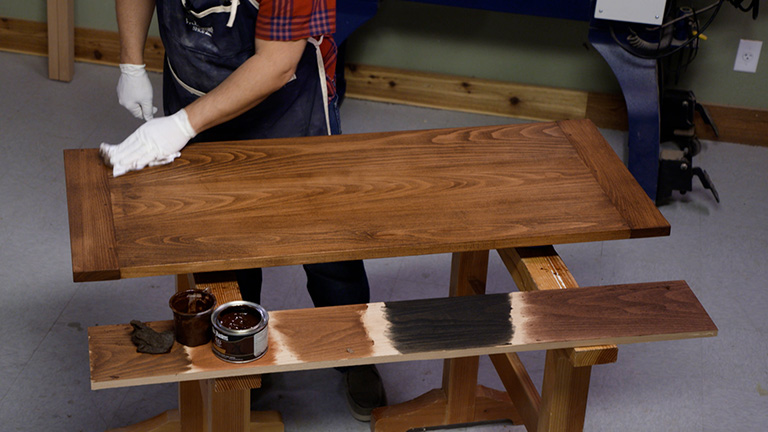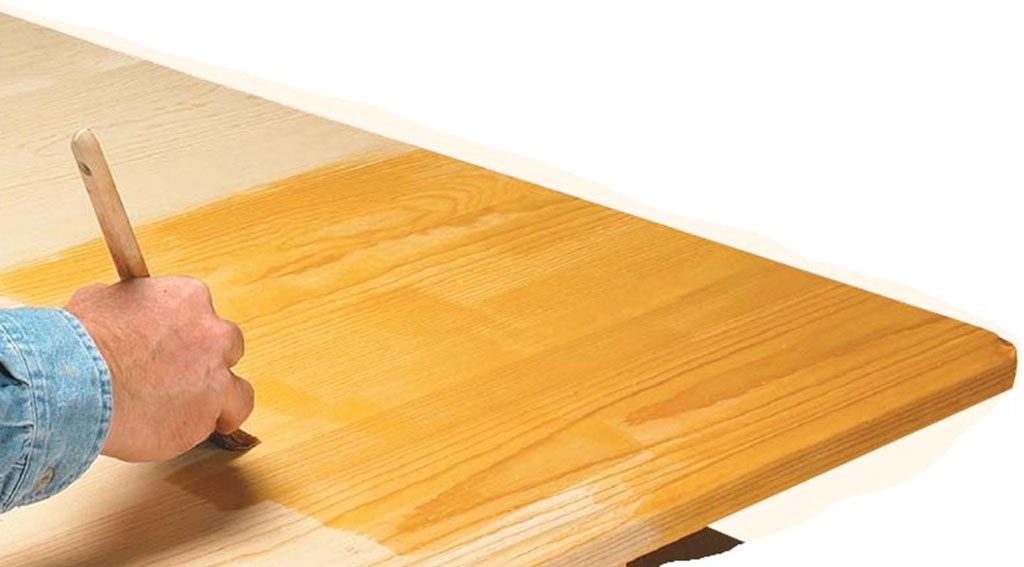The quality of a job is often only as good as the tool used to accomplish it. Applying a smooth, blemish-free finish by brush is no exception. A high-quality brush in good working order makes the task easier and the result much better. But when the job is done, it’s always tempting to simply drop the brush into a can of the appropriate solvent and walk away. The downside is that if you don’t take the time to clean the brush properly, the job will be harder later on and your brush may suffer.

One of the simplest things you can do to make cleaning your brush easier takes place at the beginning of the finishing process. This trick is called pre-loading or conditioning. Pre-loading is done by dipping the brush up to the ferrule in a container of the solvent present in the finish (mineral spirits, lacquer thinner, alcohol, or water) and allowing it to soak for a minute. The solvent fills the reservoir at the top of the brush to prevent the finish from drying in this area. The brush will stay more flexible during use and require a lot less effort to clean. Then, before putting the brush to work, shake or wipe off as much solvent as possible.

Once the finish has been applied, make it a habit to give the brush quick attention. Whether it’s a synthetic or natural bristle brush, the process is essentially the same. The first thing you want to do is squeeze as much finish out of the brush as possible. Rub both sides of the brush across the lip of the can or jar from the ferrule on down. Do this until you’re not getting any more finish off the brush. Next, rinse the brush thoroughly in a container of the appropriate solvent. The same container of solvent used to pre-load the brush is an easy option.

This next step — washing the brush with soap and warm water — is optional. But it guarantees a super-clean brush. Dishwashing soap is the standard choice. Wet the brush and then work the soap through the bristles with your fingers. You can also use a brush comb at this stage to help loosen and remove any remaining finish. After a couple minutes, you can rinse the soap out of the brush. You may note a contradiction. Natural bristles don’t like water. But as long as the brush is dried and then stored properly, a water wash isn’t a problem.

When thoroughly clean and dry, the final step is to wrap the brush to shape and protect the bristles. Many brushes come in a cardboard sheath. This is a good way to store them. Or, you can wrap the brush in heavy paper. Either way, it’s never a good idea to leave a brush uncovered. When you get into the habit of following this simple routine, a good brush will last for years. And best of all, it will always be ready for duty when needed.













